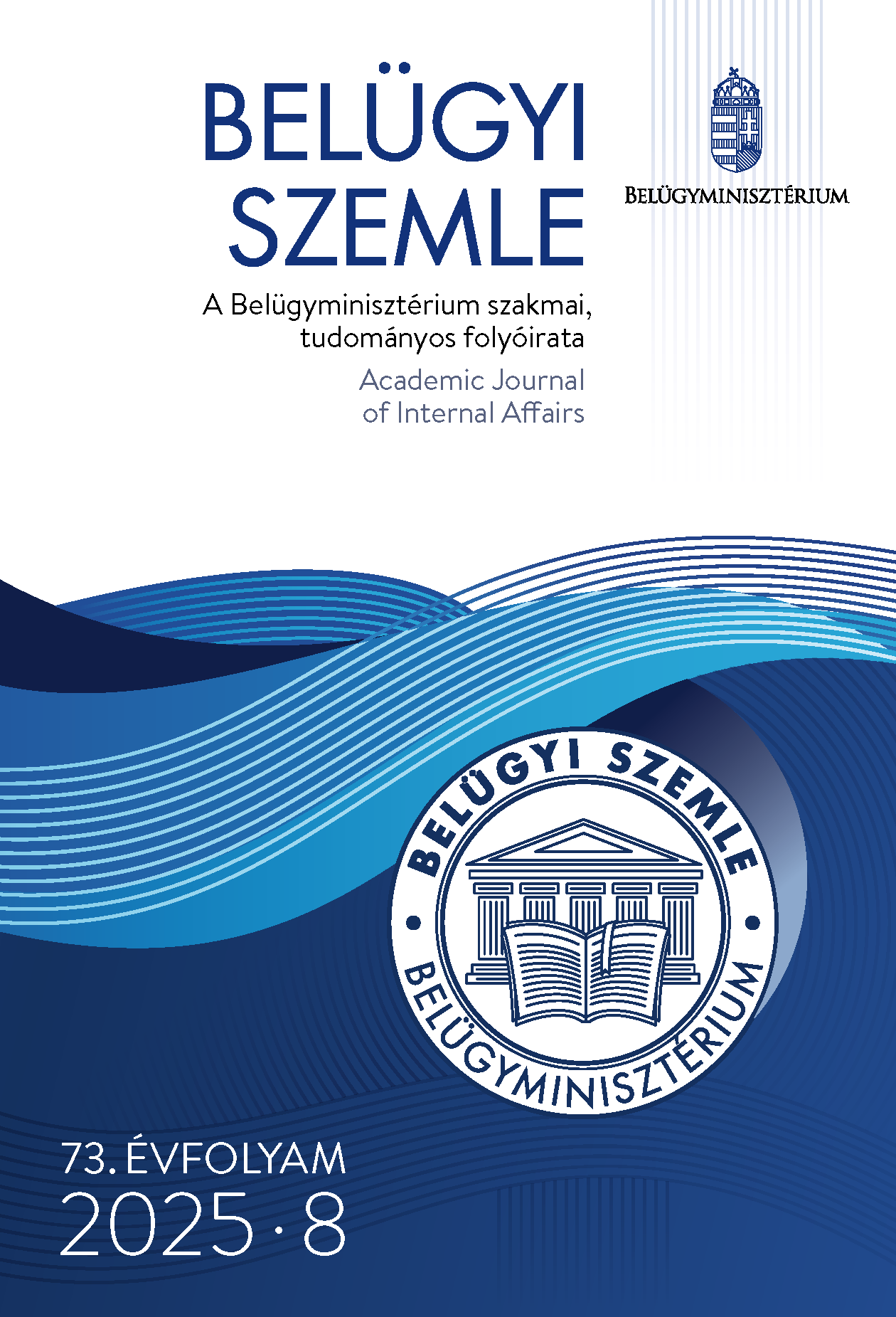Abstract
Aim: This study aims to examine the identification of goods infringing intellectual property rights (IPR) during customs procedures, with a particular focus on the practices of the National Tax and Customs Administration of Hungary (NTCA). The research presents the control mechanisms applied by customs authorities, as well as the legal and procedural tools used for the identification and detention of counterfeit goods.
Methodology: This study is based on secondary research, which includes an analysis of relevant domestic, EU, and international legal frameworks, as well as academic literature. Additionally, the research reviews recent national and EU customs enforcement statistics and the procedures applied by customs authorities.
Findings: The analysis highlights that customs authorities play a key role in preventing the spread of counterfeit goods; however, the effectiveness of their procedures largely depends on the cooperation of rights holders. The research confirms that combating counterfeiting requires broad collaboration, particularly given the increasing demand for cheaper goods due to anticipated global economic challenges. The study identifies an ongoing legislative effort that could lead to a paradigm shift in the current regulatory framework. If the costs of storing and destroying counterfeit goods after customs inspection can be imposed on the owners of these goods, it is expected that the number of IPR enforcement actions linked to customs procedures will significantly increase.
Value: The study formulates recommendations for enhancing customs capacity and improving the effectiveness of IPR enforcement within customs procedures. Such a paradigm shift may require customs authorities to expand human resources and storage capacities, necessitating prior preparation.
References
Bacher V. (2002). A szellemi tulajdon büntetőjogi védelme, figyelemmel a jogsértő magatartások polgári jogi összefüggéseire. Gazdaság és Jog, 10(12), 27–31. https://szakcikkadatbazis.hu/doc/5025303
Bakai K. P. (2014). A vámunió irányításának reformja: az Európai Unió egyik legégetőbb kérdése. Magyar Rendészet, 14(6), 119–130. https://folyoirat.ludovika.hu/index.php/magyrend/article/view/3872
Csaba Z., & Gecsei M. (2021). Kockázatelemzés a gyakorlatban: cigaretta a repülőtéren. In V. Czene-Polgár, K. Gál, G. Kiss, A. Gönczi & K. Boros (Szerk.), Tradíció, tudomány, minőség: 30 éves a Vám- és Pénzügyőri Tanszék (pp. 129–142). Magyar Rendészettudományi Társaság Vám- és Pénzügyőri Tagozat. https://doi.org/10.37372/mrttvpt.2021.2.7
Directorate-General for Taxation and Customs Union, & European Union Intellectual Property Office. (2024). EU enforcement of intellectual property rights: Results at the EU border and in the EU internal market 2023. European Union Intellectual Property Office. https://doi.org/10.2814/4807266
European Union Intellectual Property Office, & European Patent Office. (2022). IPR-intensive industries and economic performance in the European Union: Industry-level analysis. European Patent Office. https://www.euipo.europa.eu/en/publications/ipr-intensive-industries-and-economic-performance-in-the-european-union-industry-level-2022
European Union Intellectual Property Office. (2019). Qualitative study on risks posed by counterfeits to consumers. European Union Intellectual Property Office. https://euipo.europa.eu/tunnel-web/secure/webdav/guest/document_library/observatory/documents/reports/2019_Risks_Posed_by_Counterfeits_to_Consumers_Study/2019_Risks_Posed_by_Counterfeits_to_Consumers_Study.pdf
European Union Intellectual Property Office, & Organisation for Economic Co-operation and Development. (2020). Trade in counterfeit pharmaceutical products. Organisation for Economic Co-operation and Development. https://doi.org/10.1787/a7c7e054-en
European Union Intellectual Property Office. (2023). Storage and destruction of seized counterfeit goods in the EU. Publications Office of the European Union. https://doi.org/10.2814/835084
Hornyacsek J. (2014). A tudományos kutatás elmélete és módszertana: szakkönyv tudományos munkát végzők és doktori tanulmányokat folytatók számára. Nemzeti Közszolgálati Egyetem Hadtudományi és Honvédtisztképző Kar.
Kiss T. (2006). Szerzői jogi jogsértések büntetőjogi jogkövetkezményei. Debreceni Jogi Műhely, 3(4), 1–9. https://ojs.lib.unideb.hu/DJM/article/view/6472
Organisation for Economic Co-operation and Development, & European Union Intellectual Property Office. (2021). Global trade in fakes: A worrying threat. OECD Publishing. https://doi.org/10.1787/74c81154-en
Szabó A. & Csiki O. (2023). A Z generáció attitűdje a hamis termékek vásárlásával kapcsolatban. In Szabó A., Zsámbokiné Ficskovszky Á. & Csaba Z. (Szerk.), Tudás- és értékmegosztás – mesterséges intelligencia – generációváltás? (pp. 160–173). Magyar Rendészettudományi Társaság. https://doi.org/10.37372/mrttvpt.2023.1.13
World Customs Organization. (2023). Illicit trade report 2022. https://www.wcoomd.org/en/media/newsroom/2023/june/the-world-customs-organization-releases-the-illicit-trade-report-2022.aspx
World Customs Organization. (2024). Illicit trade report 2023. https://www.wcoomd.org/en/media/newsroom/2024/june/wco-releases-illicit-trade-report-2023.aspx

This work is licensed under a Creative Commons Attribution-NonCommercial-NoDerivatives 4.0 International License.
Copyright (c) 2025 Academic Journal of Internal Affairs
